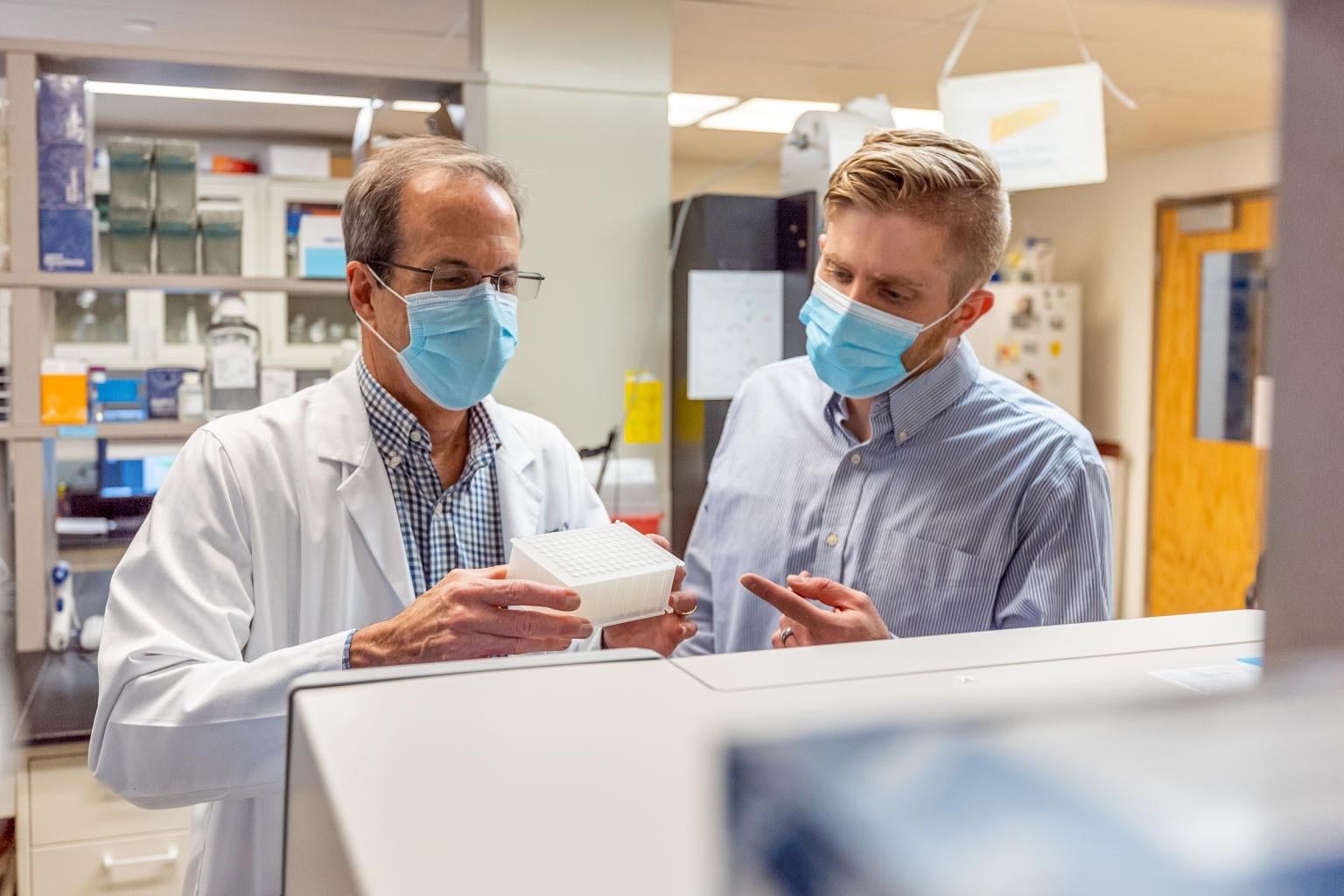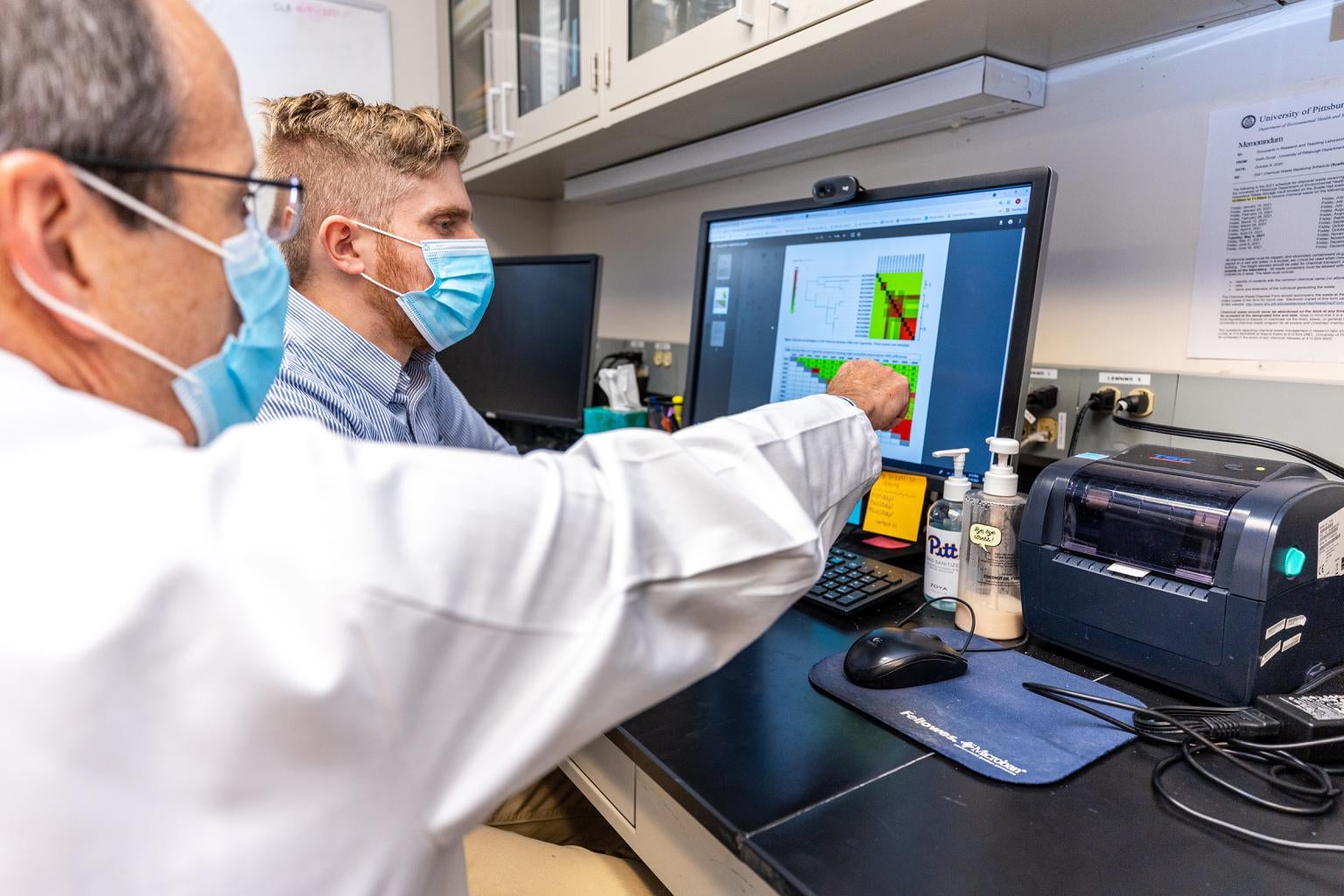Alumnus finds passion in detecting, preventing infection outbreaks
Within months of Alexander Sundermann’s MPH graduation (IDM ‘14, '22), the new UPMC infection preventionist and his colleagues were faced with a spate of severe fungal infections—some fatal—among transplant patients. The outbreak was traced to a Clearfield County commercial laundry service, where hospital linens were determined to have been contaminated by molds.

Meticulous analysis revealed that the laundry’s roof air intake system allowed naturally occurring environmental molds called mucormycetes to be deposited on the hospital’s linens during the drying process.
During the investigation, UPMC’s transplant program shut down and representatives from the U.S. Centers for Disease Control and Prevention visited Pittsburgh. Ultimately, the UPMC team found similar conditions existed at some of the 13 additional hospitals they studied.
Process changes made since then have successfully mitigated mold risks at commercial linen services in Pennsylvania and elsewhere, thanks to wide dissemination of the team’s findings.
“Health care-associated infections (HAIs) are common, costly, and can be deadly,” says Sundermann, who completed a DrPH at Pitt Public Health in April 2022 and is now assistant professor of medicine in the School of Medicine’s Division of Infectious Diseases. “And the rate is increasing due to COVID-19.”
More than 700,000 patients contract infections in U.S. health care settings every year, leading to nearly 100,000 deaths. But researchers like Lee Harrison, MD, professor of infectious diseases at the School of Medicine and of epidemiology at the School of Public Health, and Sundermann, his former trainee with whom Harrison continues to collaborate, are focused on finding ways to reduce HAIs.
Enter the Enhanced Detection System for Healthcare-Associated Transmission (EDS-HAT), pioneered by Harrison, Sundermann and a team of researchers and clinicians at Pitt, UPMC and Carnegie Mellon University. EDS-HAT combines machine learning and whole genome sequencing surveillance to identify disease outbreaks more quickly than traditional approaches.
That’s because traditional methods rely more on observation, which sometimes uncovers nothing more than coincidence.
“A clinician will say ‘Look, I’ve had five of these infections on my unit in the past couple of weeks. That’s weird,’ and then infection preventionists do an investigation and we do sequencing and find out it isn’t really an outbreak,” says Sundermann.
By contrast, Pitt investigators successfully detected 99 infection clusters and identified at least one potential transmission route in the majority of those clusters during a pilot study of EDS-HAT, which was reported in the November 2021 issue of the journal Clinical Infectious Diseases. Because the test run used electronic health record data from 2016 to 2018, as much as a year had already elapsed between infection reports and when data analysis began. Had EDS-HAT been running in real time, the team estimated that as many as 63 infectious disease transmissions—and at least three deaths—might have been prevented.

Shortly after November 2021, UPMC hospitals initiated real time monitoring with EDS-HAT on a weekly basis, says Harrison. “Our initial results were so striking that we decided we could no longer use the system on a six- to 12-month lag,” he adds.
Within a one-year time frame, the team sequenced almost 2,000 microorganisms, says Sundermann, who is currently at work on a manuscript describing the newest outcomes. He will also present the findings at an April meeting of the Society for Healthcare Epidemiology of America in Seattle.
“Endoscopes are routinely found to be contaminated at any hospital in the U.S. because of cleaning practices and tracing those outbreaks usually takes a lot of effort,” he adds. “With the traditional methods, they’d probably go undetected.” An endoscope is a long, thin tube with a small camera inside used to examine the esophagus, stomach and small intestine.
Systematic use of EDS-HAT surveillance, however, uncovered potential endoscope-related transmission in as few as two patients, after which the suspect scope was pulled from service before any more patients could be infected. With each such discovery and removal, infections stopped.
“With that particular intervention, the effectiveness was 100%,” says Sundermann. Once all the data are analyzed, the team will have a better idea of how EDS-HAT affects the bottom line in terms of potential deaths averted and infection treatment costs saved.
In essence, Sundermann says, his job these days is in “applied epidemiology” because “we’re studying what sequencing and surveillance can do, and at the same time bringing it back and applying it to the hospital in a real-world scenario.”
Finding solutions to a mysterious mold outbreak and refining ways to detect infection transmission as early as possible are challenges Sundermann is happy to undertake. “You can see the impact of your work every week,” he says.
—Michele D. Baum